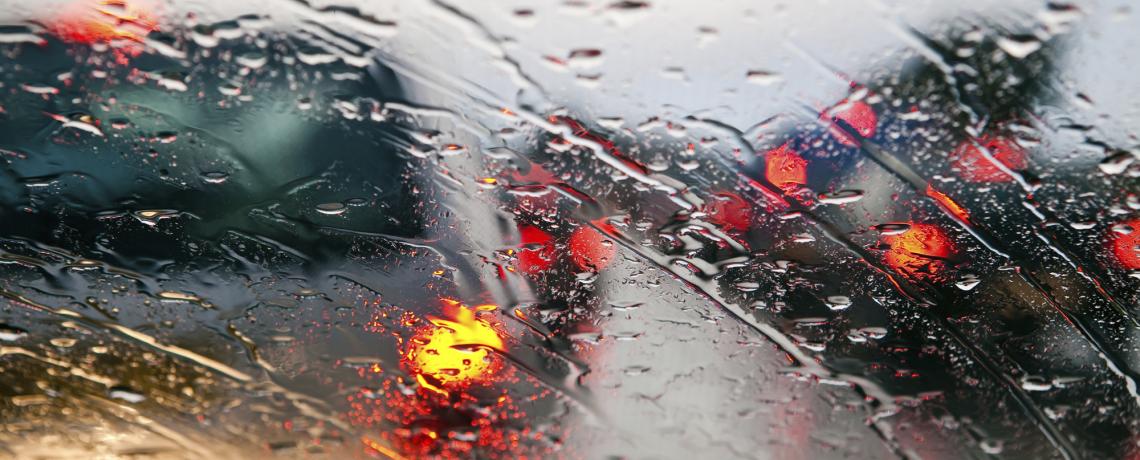It’s official. Summer is well and truly over and Autumn is here to stay. September right through to November sees the greatest amount of rainfall in the UK and with wind and heavy rain forecast for the next week, we can’t say it comes as much of a surprise. So with the help of IAM RoadSmart’s head of driving and riding standards, Richard Gladman, here are some crucial tips and advice to help you drive safely in the rain.
Heavy Rain:
• Heavy rain will affect your visibility, so take it slow. Rule 126 of the Highway Code states that the braking distance between yourself and the vehicle in front of you should be two seconds when driving on a dry road, and at least four seconds in the wet. It is even longer on icy surfaces. IAM RoadSmart recommends up to 10 times the braking distance when driving on ice.
• Your windscreen should be clean, wipers effective and the jets positioned correctly and aimed at the screen. It is sensible to clean the windscreen, make any necessary adjustments and remove anything from the main area before you start your journey.
• A good rule of thumb is that if you need windscreen wipers, then you need your headlights. Automatic light settings will not always activate in bad weather conditions, so it is up to you to make a sensible decision as to whether these need to be turned on.

Aquaplaning:
• If the water is collecting and forming puddles on the road surface, your car is at risk of aquaplaning. Aquaplaning – otherwise known as hydroplaning, is where a layer of water builds up between the tyres and the surface of the road. The tyres cannot then grip the road, causing loss of traction and loss of control over the car. To recover from aquaplaning, ease gently off your accelerator, have a firm grip of the steering wheel and be sure not to make any sudden steering actions. The car will eventually regain its grip as the water clears.

Floods:
• First ask yourself - can you take another route? If not, then you need to identify how deep the flood is. If the standing water is more than six inches deep, avoid driving through it. If you are familiar with the road, you can judge the flood in relation to the kerb.
• If heavy rain was not the cause of the flood, then what was? And what impact on the road does it have? For example, if it is a burst water main, the standing water may look like a normal flood but the road surface beneath the water may be completely broken up. If you are unsure how the flood has formed, then avoid it altogether.
• Are there other vehicles similar to yours that are safely driving through? From this, make a judgement call as to whether it is safe to travel through or not.
• If the water is fast flowing, do not attempt to drive through it, as there is a real danger of your car being swept off the road.
• If you have taken everything into consideration and decide to drive through the flood, be sure to do so slowly. The best approach is to press lightly on your clutch and add gentle pressure on your accelerator to increase your engine revs. Do so without increasing your speed, in a similar way to how you would undertake a hill start. This will prevent water from entering your exhaust. If you are in an automatic car, accelerate slightly but control the speed with your brakes. When you have passed the flood, test your brakes to make sure they are dry and working properly.
• If you are in the slightest doubt, then turn around and don’t go through the flood. Often modern saloon cars have the air intake in the wheel arch, which may be below the water level. If your engine should take in water, it will immediately hydro lock and the engine will stop.
• Remember to stay alert and avoid splashing pedestrians. If this is done accidentally- even when driving through puddles at the side of the road - you could receive a fixed penalty and three points on your license for driving without due care and attention, or without reasonable consideration for other road users. If deliberately done, it could be a public order offence, a court appearance and a fine.

Richard Gladman, head of driver and rider standards, said: “With the British weather the way it is, we should all be well practised at driving in the rain. Keeping your car maintained and the rubber (wipers and tyres) in good condition will help you stay safe. In the recent extremes, we have seen that standing water and floods are becoming more commonplace, so take extra care and if possible avoid driving through standing water. If you’re in any doubt about the depth or surface underneath a flood, then it’s best not to take any chances.”
Other CarCliq articles that may interest you:
How to spot a flood damaged car
How to replace car wiper blades
What is aquaplaning and how can you avoid it
Driving safely in windy weather
For more CarCliq Guides click here